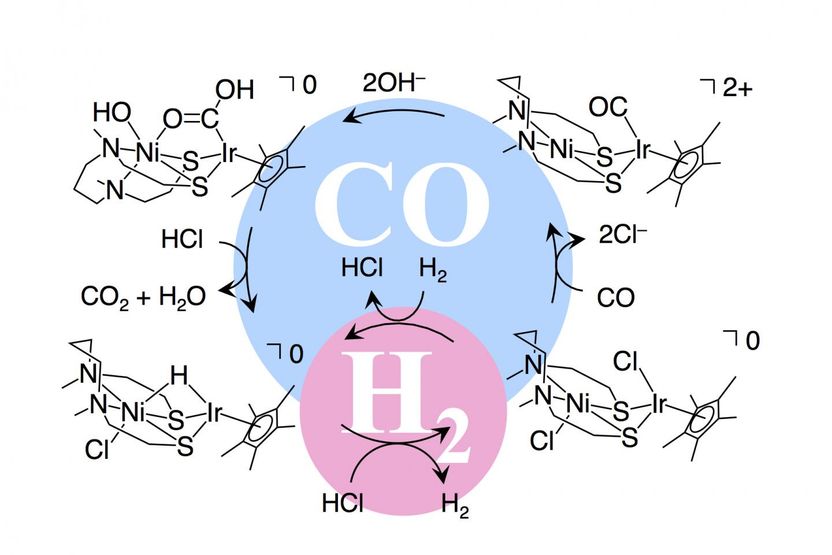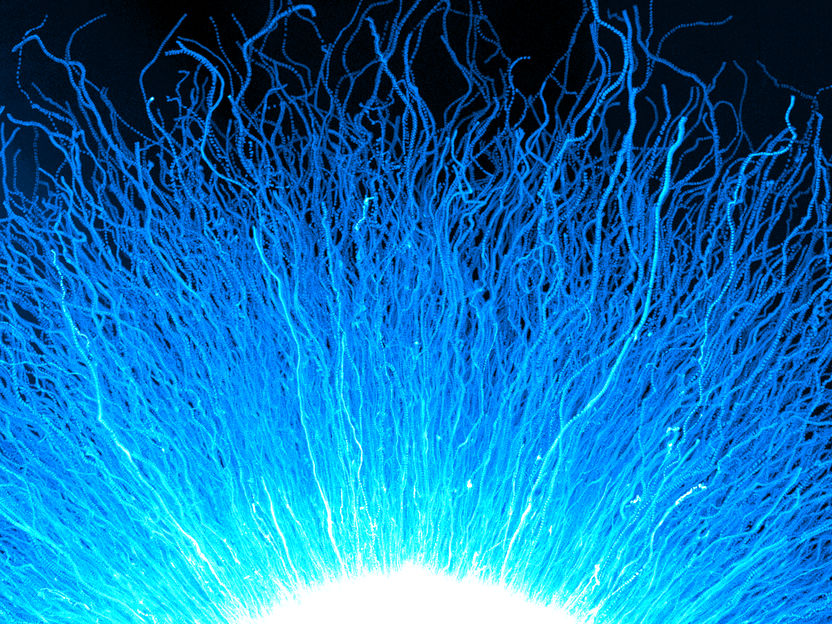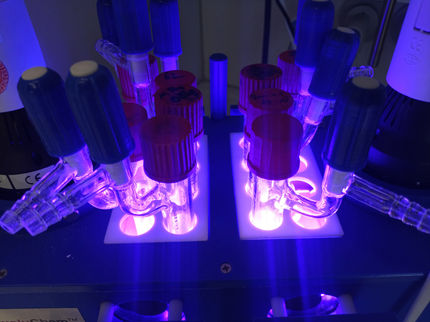New process for polarity inversion of chemical compounds for precise drug synthesis
“With this research, we believe we have made a significant contribution to selective, sustainable and targeted chemical synthesis”
Researchers at Leipzig University have developed a new process for reversing the polarity of chemical compounds, also known as umpolung, for the precise synthesis of pharmaceuticals. This innovative method, developed by a team of scientists led by Professor Christoph Schneider at the Institute of organic chemistry, provides a solution-oriented approach to a long-standing challenge in organic and medicinal chemistry,” says Till Friedmann, lead author of the study funded by the German Research Foundation. It has just been published in the Journal of the American Chemical Society.

Professor Christoph Schneider (right) and Till Friedmann
Michael Laue
“For the first time, this strategy allows us to efficiently and precisely create a structural motif that was previously difficult to access,” says Friedmann. Specifically, the chemists have discovered how a process can be used to reverse the polarity of chemical compounds in such a way as to achieve the highly unusual placement of two carbonyl groups along a carbon chain.
Hydrazones as the key to success
The carbonyl group, characterised by a double bond between a carbon and an oxygen atom, is the central functional unit in organic chemistry. Due to their natural polarity – where the carbon carries a partial positive charge and the oxygen carries a partial negative charge – synthesising compounds with two carbonyl groups at a very specific distance from each other has been difficult. This is because it requires the targeted reversal of the polarity of one of the two carbonyl groups. The key to this new success was the use of a special functional group called a hydrazone, which can reverse the natural polarity of the carbonyl group. By employing a particularly effective and precisely tailored catalyst, the researchers were able to produce the desired molecules very efficiently in reactions with another reaction partner. In addition to detailed mechanistic studies of the reaction process, this new strategy has already been applied to synthesise several medical agents, including the antiepileptic drug pregabalin.
Chirality as the key to functionality
Chirality, or the asymmetric arrangement of atoms in a molecule, plays a crucial role in chemistry and biology. Enantiomers, which are mirror-image and at the same time non-superimposable forms of a molecule, can have completely different effects in the human body. In some cases, the other enantiomer is even toxic. A major challenge in chemistry is the targeted synthesis of these compounds in the laboratory. The silylium ACDC (asymmetric counterion-directed catalysis) concept used by the research group solves this problem. “Two charged particles combine to form an ion pair: a negatively charged particle from the catalyst and a positively charged particle from the hydrazone. The chiral catalyst ensures that effectively only one of the two possible mirror images of the product is formed,” explains study leader Professor Schneider. The term ‘silylium’ refers to a positively charged silicon particle that acts as an active component of the catalyst.
Drug development potential
Compounds produced using this strategy have many potential applications. They can serve as starting materials for the synthesis of a wide range of drugs, the production of which has traditionally relied on toxic heavy metal catalysts. These compounds are also valuable building blocks for chemical transformations that are inaccessible with natural polarity. “With this research, we believe we have made a significant contribution to selective, sustainable and targeted chemical synthesis,” says Professor Schneider. This method will provide the basis for further developments and innovative applications, particularly in medicinal chemistry.
Original publication
Original publication
Till Friedmann, Karl Schuppe, Michael Laue, Ole Goldammer, Christoph Schneider; "Catalytic Enantioselective Synthesis of 1,4-(Hetero) Dicarbonyl Compounds through α-Carbonyl Umpolung"; Journal of the American Chemical Society, Volume 147, 2024-12-30
Topics
Organizations
Other news from the department science

Get the life science industry in your inbox
By submitting this form you agree that LUMITOS AG will send you the newsletter(s) selected above by email. Your data will not be passed on to third parties. Your data will be stored and processed in accordance with our data protection regulations. LUMITOS may contact you by email for the purpose of advertising or market and opinion surveys. You can revoke your consent at any time without giving reasons to LUMITOS AG, Ernst-Augustin-Str. 2, 12489 Berlin, Germany or by e-mail at revoke@lumitos.com with effect for the future. In addition, each email contains a link to unsubscribe from the corresponding newsletter.
More news from our other portals
Last viewed contents
Millipore Acquires NovAseptic AB: Broadens Offering to Biotech and Pharmaceutical Industry
Evotec and Celgene collaborate in drug discovery for neurogenerative diseases
Evotec and Roche Form Global Alliance to Jointly Discover Novel Drugs

Oral vaccine instead of injections? - Exotic workers help with mRNA vaccination through the stomach
Learning how the brain takes out its trash
Newly discovered plant enzyme could lead to more efficient ethanol production from cellulose

Multifunctional catalyst for poison-resistant hydrogen fuel cells
Biotage acquires ATDBio - Biotage strengthens its position in DNA and RNA Oligonucleotide synthesis and purification
Graffinity and Elan launch fragment-based drug discovery collaboration

Q1 Results: Merck Benefits from Global Diversification in a Challenging Environment - Medium-term structural growth drivers intact





















































